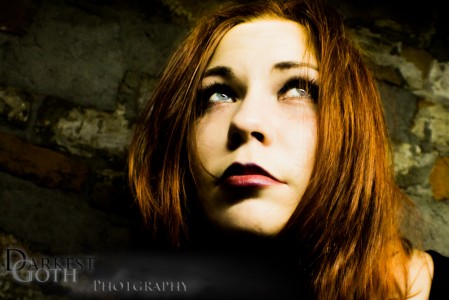V’s Disclaimer: As a reminder, before we begin the article, all of the personal details related to myself and my models have been changed. This anonymity allows me to give personal examples without embarrassing anyone or revealing any confidences.
Yesterday we looked at the question: What is a Group Shoot?
In today’s article, we look at how to find models or photographers to work with at a group shoot. (Tomorrow we’ll look at a list of best practices for the day of the Group Shoot.)
V’s 12 Steps To Prepare for a Group Shoot
1. Subscribe. Once you’ve found a group shoot page that looks like a good fit, you’ll normally subscribe to their event page. (Lots of folks are using Facebook Events right now, though I think there are ones using social networks spanning everything from Twitter to Pinterest.)
2. Make Your First Post. Now you’ll post a notification on the Event Wall stating that you’re attending as either Photographer, Model, or both. (Or if you’re a makeup artist or hair dresser, you’ll do the same thing.) You’ll tell a little about yourself, the type of modeling/photography you prefer, your “style”, and then include a link to your work (ModelMayhem, Facebook Page, Tumblr, etc.).
For Facebook users: Facebook will put a thumbnail from one of the links you post. If you’d prefer to have more immediate pictures, it’s not a bad idea to delete the “auto-thumbnail” Facebook includes, and just embed 3-6 portfolio images in the post. Finally, mention that your schedule is below in the comments. (Currently, Facebook mobile will allow you to edit comments to a post, but not the post itself. It’s a bit clumsy to keep having to make all new posts every time your schedule changes and you’ll probably make updates on your mobile.)
3. “Comment” Your Schedule. Carve out a schedule based on hour-long chunks within that timetable. (1/2 hour shoots are bad ideas in Group Shoot land. In fact, there are times I think an hour is too short to make everything happen, but 1/2 hour is just crazy.) Let’s say there’s an event on a Saturday from 10 AM to 4 PM and I’ll be there all day, but will be taking lunch from noon to one. I’ll now put a schedule like this in the first comment below my post:
Availability Schedule
10 AM – 11 AM – Open
11 AM – 12 PM – Open
Noon – 1 PM – Lunch
1 PM – 2 PM – Open
2 PM – 3 PM – Open
3 PM – 4 PM – Open
CURRENTLY: Available
4. Filling Your Blocks. You can wait for people to contact you but I tend to find its most effective to look for people that have openings and contact them directly. (Now, a lot of people will just ask questions in the comments about availability of models or photographers they like, but I want the person I’m contacting to know a bit more about me—to understand what makes me tick and to have the opportunity to see if she/he likes my stuff. As such, I will go to their profile page and message them directly. Introduce myself, explain that I really like what they do, let them get a feel for me, include links to my work, and then see if they’d like to schedule a shoot in one of our available blocks. Sometimes I get no responses, but usually I’ll find some cool people to work with.)
5. Update Your Schedule. As soon as someone confirms for one of your blocks, pencil it in. Then update your schedule. Future people you contact now have fewer options to choose from. (Try not to reschedule once you’ve booked slots if you can avoid it. Nobody likes feeling like they’re being shuffled because you found someone “more important” for their slot.) If you are doing this on Facebook, as you add someone’s name to your schedule, if they’re subscribed to the event, it’ll link to their profile, which is pretty cool. Once I’m full, my schedule would look like this! (Links are for cosmetic purposes only and don’t really work for these mythical models.)
Availability Schedule
10 AM – 11 AM – Danielle McDanube
11 AM – 12 PM – Rad Parsoins
Noon – 1 PM – Lunch
1 PM – 2 PM – Janette Peters
2 PM – 3 PM – Night Gaze
3 PM – 4 PM – Tonya Harden
CURRENTLY: Full
6. Wardrobe. (Take this element in conjunction with #7.) Most models will have a different outfit for each shoot, so I like to contact them as soon as they’re booked to see what they’re thinking of. (Turnabout is fair play, models. When you book a photographer—or agree to a shoot—ask them about what type of wardrobe they feel would be a good fit for you and their style.) The discussion can be pretty flexible, but it does need to lead “somewhere” concrete as far as the clothes. Sometimes we’ll talk through the look we want to achieve and then we come up with a wardrobe through that. Other times, I’ll have a model choose two outfits she can decide between and I’ll decide which one I like better for my style.
7. Hair/Makeup. I tend to recommend that models choose to have one hair/makeup style for the day, and then choose outfits that will go with that theme. Obviously, this restricts the options for Wardrobe in #6, but it saves so much time that it’s a real life saver. Photographers might feel like they don’t get as many options this way, but most will quickly realize that having a model who doesn’t having to keep messing with his/her makeup and hair will make sure they get more time getting to know their model and taking awesome pictures, and less time hearing, “just give me five more minutes.”
8. Contact Info. The sooner you can get pertinent contact info from folks, the better. Also, ask them what their preferred form of communication is and try to use it.
9. Special Info. I like to let people know if there are any special things about how I conduct a shoot. Models may have special ways they do a shoot or special ways to elicit great reactions from them. It’s a great idea to tell folks ahead of time about these things. (I’ve had some models who prayed before every shoot and that allowed them to feel very comfortable during the shoot. I’ve also had models with a great sensitivity to one feature—like a hairline scar or birthmark—and them letting me know that ahead of time allowed me to make shooting decisions that minimized that. Your Editor at DGM brings packs of Red Vines to give to every model he works with because he comes from the film world and most film sets stock their craft services table with Red Vines.)
10. Confirmation. Confirm with your model/photographer/etc. the final week before the shoot. (I usually suggest a 72 hour cut off for responses prior to the event. So, in other words, if I haven’t heard from someone three days before the event to confirm, I’ll either fill the spot elsewhere, or plan to spend time talking to folks during that slot–which is great, too.)
11. Legal Use of the Photos. Always discuss the use of the photos with your photographer/model ahead of time. Although every state differs somewhat, normally, the photographer owns the photos for group shoots.
While most states acknowledge the model should be able to use the images in portfolio work, at the very least, you can often get a much better agreement just by asking the photographer about it. Many photographers are more than willing to give models an agreement for much less restrictive use if they ask up front–especially since it’s for a group shoot. (My personal agreement basically acknowledges that I own the rights, but then gives the model full rights that don’t permit me from using the images. In other words, the only restriction the model has is that she/he can’t sell any exclusive license to the images—such as to a stock photography site. Both the model and the photographer are free to use it for any non-exclusive commercial purposes, however, so long as credit is given to the other one.)
12. Turnaround and Number of Images. Every photographer has a different turnaround because we all have different things on our plates, so discussing what the specific turnaround and how many images the model can expect is important so both parties are on the same page. Many models think that once the picture is in the camera, it’s ready to get spit out like a one hour photo.
The reality is that most of us as photographers are light painters (which is actually what “photograph” means!) and we do a lot of post-coloration, contrast, and general touch up to make the image look its best in programs like Aperture and Lighroom. (Don’t confuse “touch up” with the notorious “airbrushing” that turns people into plastic dolls. Most touch ups just help focus the gaze without removing features. A lot of alternative photographers will also do special effects touch ups like brightening tattoos so they seem on the verge of coming to life.)
All of this takes time and it’s not uncommon for turnaround from photographers to be 3-8 weeks. Additionally, the amount of images will vary, although it’s uncommon to get more than 8 to 10 images per shoot. (A rule of thumb is that 1 out of 30 images taken will make the final cut, as there are hundreds of little things that can flaw an image that have nothing to do with either model error or photographer error.)
Now, how about the day of the event? What advice do I have for that?
Tune in tomorrow and we’ll cover it!




Trackbacks/Pingbacks